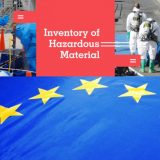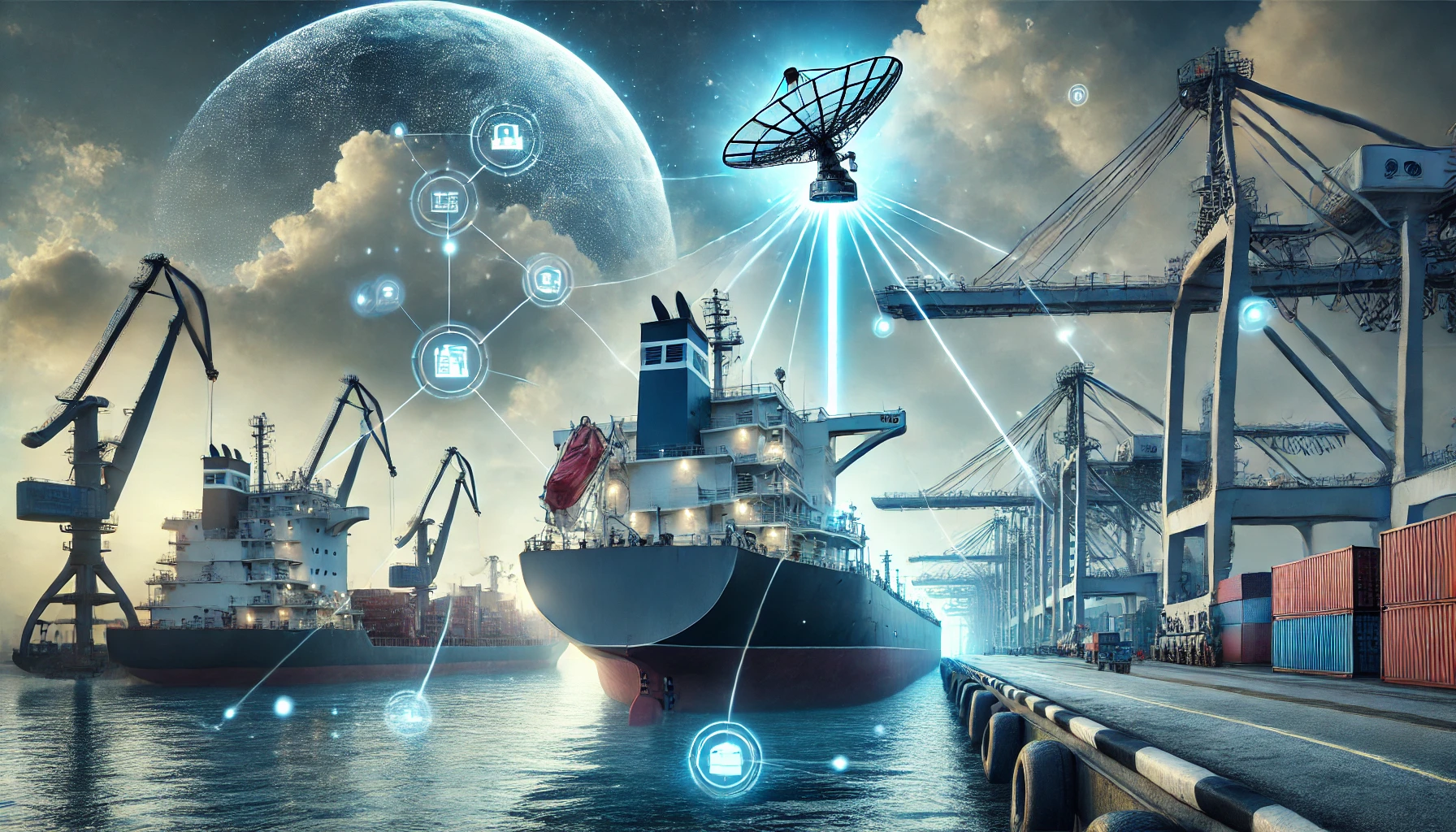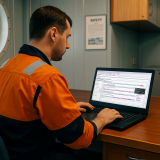Barring a major geopolitical incident or unexpected maritime provocation, government shipbuilding isn’t going to change course. With Admiral Michael Gilday approaching the final “lame duck” year of his four-year term as Chief of Naval Operations and the 2024 election season looming, the prospect for major changes in the Navy’s demand signal seems limited.
Aside from the U.S. Coast Guard’s recent award of a second tranche of Heritage-class Offshore Patrol Cutters, the U.S. government remains laser-focused on procuring undersea platforms. Major initiatives for future U.S. surface ships will continue to sit in a relative holding pattern, and with America’s Congressional leaders demanding tough new standards on large surface ship procurements, forcing key subsystems and platforms to mature before authorizing full production, new combatants will be slow to enter the fleet.
Outside of emergent requests for small, expendable or “munitions-like” surface craft, America’s surface ship suppliers must be content with the projects or contracts they already have in hand. But with commercial shipbuilding ramping up, the government’s lack of urgency in growing the Navy’s surface fleet may not be a bad thing.
Behind the scenes, there are plenty of interesting opportunities. General Dynamics is looking for lots and lots of low-cost help as Electric Boat races to ramp up submarine production. With new partners, the benefits of America’s substantial and ongoing investment in the undersea domain may finally start trickling down to smaller shipbuilders in a meaningful way.
Opportunities also exist outside of the combatants and support vessels enumerated in the Biden Administration’s traditional 30-year shipbuilding plan. The U.S. Navy seems set to continue recapitalizing drydocks, berthing barges and other oft-ignored waterfront infrastructure, offering prepared shipyards unprecedented opportunities to make their margins on the margins of the U.S. Fleet.
Other areas that may prove interesting over the next year are in space-support and space-port vessels and structures—infrastructure projects to support surging U.S. government interest in space.
- “If General Dynamics is willing to subcontract a good portion of their basic work out to a smaller shipyard or two, it would be the real shipbuilding prize of the year, and, potentially, a first step at opening basic submarine fabrication work to a wider, more diverse manufacturing base.”
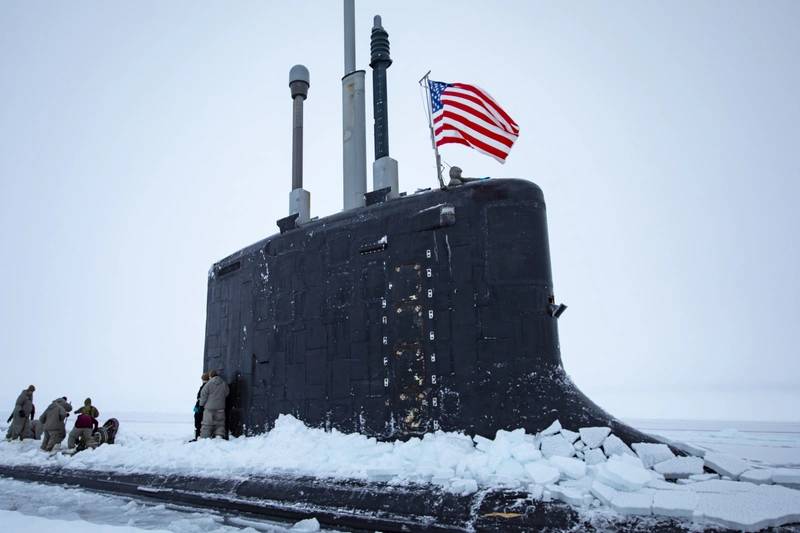 The national ensign flies above the Virginia-class fast attack submarine USS Illinois (SSN 786) during Ice Exercise (ICEX) 2022. USS Illinois and the Los Angeles-class USS Pasadena (SSN 752) are the two fast attack submarines participating in the exercise. (U.S. Navy photo by Mass Communication Specialist 1st Class Alfred Coffield/Released)
The national ensign flies above the Virginia-class fast attack submarine USS Illinois (SSN 786) during Ice Exercise (ICEX) 2022. USS Illinois and the Los Angeles-class USS Pasadena (SSN 752) are the two fast attack submarines participating in the exercise. (U.S. Navy photo by Mass Communication Specialist 1st Class Alfred Coffield/Released)
Undersea warfare Is the big prize
The Columbia-class ballistic missile (SSBN) submarine program remains the Navy’s first procurement priority. America’s effort to build at least 12 big new ballistic missile subs requires significant industrial base expansion. Unless America’s undersea manufacturing industrial base grows, America’s second naval procurement priority, an ambitious attack submarine building program, will continue to suffer, stranded as a distant secondary priority to the Navy’s big strategic sub.
Facing pressure to keep production of both Columbia SSBN and Virginia-class attack subs on schedule, General Dynamics may well seek out more manufacturing support. A second facility of a few thousand workers, built to the scale of Electric Boat’s big annex at Quonset Point, Rhode Island, would be a welcome boost the company’s manufacturing, outfitting, and modular-construction capabilities, and a real relief to the Navy’s hard-bitten undersea program managers.
If General Dynamics is willing to subcontract a good portion of their basic work out to a smaller shipyard or two, it would be the real shipbuilding prize of the year, and, potentially, a first step at opening basic submarine fabrication work to a wider, more diverse manufacturing base. While shipbuilders are eager for General Dynamics to pick a primary partner, General Dynamics will, of course, look to spread work around, obtaining maximum political support while preventing any single small shipyard from accumulating sufficient know-how to pose a competitive second-source threat to their high-priority submarine manufacturing business.
While Electric Boat is loath to reveal business relationships, it is no secret that Louisiana-based Bollinger Shipyards appears to be Electric Boat’s prime supplier for floating submarine-support infrastructure. In 2019, Electric Boat selected Bollinger to fabricate an ocean transport barge. More work followed in 2020, and Electric Boat awarded Bollinger a construction contract for a floating dry dock and in early 2022 Electric Boat added an order for a pontoon launcher. While these orders aren’t for complex, high-end warships, they can keep small shipyards busy.
On the sea surface, the only remaining big “near-term” prizes left are in platforms supporting undersea operations. As the Navy’s quest for new submarine tenders starts heating up, the planned TAGOS-25-class of auxiliary general ocean surveillance ships will be the biggest new Navy shipbuilding prizes on offer to America’s small military shipyards this year. The $400 million TAGOS ships are expected to be small waterplane area twin hull (SWATH) vessels, operated by the Military Sealift Command, and built to carry the surveillance towed array sensor system (SURTASS).
Just like the Columbia-class SSBN, the TAGOS building program has potential to grow. As America focuses on China’s new submarines and maps China’s maritime approaches, TAGOS production may well expand beyond the current seven-hull program of record. The contest for these secretive ships is far more open than usual. VT Halter Marine has long dominated America’s surveillance ship production work, but now, rival shipyards are circling, eying VT Halter’s ongoing struggles with the U.S. Coast Guard’s Polar Security Cutter program.
Floating dry docks are also set to become hotly contested commodities. Last November, as the grounded and damaged Seawolf-class submarine, USS Connecticut (SSN-22), sat at Guam, bereft of dry-dock support, the Navy suddenly remembered that dispersed mobile dry docks—something the U.S. Navy has ignored for years—are critical requirements for a forward-deployed Navy.
Not only will new floating dry docks facilitate emergent maintenance support in forward areas, but additional floating dry docks may also help relieve submarine and surface ship workflow issues as the Navy’s public shipyards recapitalize, opening opportunities for the Navy’s public shipyards to conduct more quick-turn or high-risk work that government contracting infrastructure currently struggles to accommodate.
Demand is there; even the U.S. Coast Guard included $56 million in their FY 2023 Unfunded Priorities List to prepare the Coast Guard Yard in Baltimore, Maryland to receive a floating dry dock sometime in the future.
In fact, the Navy’s June award of an Auxiliary Floating Dry Dock Medium to Austal USA bolsters the idea that more dry docks are coming. Certainly, the dry dock order is a welcome assist for Austal’s ongoing pivot to steel shipbuilding, but the contract—if it is not protested–also sets the Navy up with a second domestic source of dry docks outside of the America’s dominant floating dry dock manufacturer, Bollinger Shipyards.
- “Other areas that may prove interesting over the next year are in space-support and space-port vessels and structures—infrastructure projects to support surging U.S. government interest in space.”
Bollinger, continuing to build up its Gulf-based constellation of shipyards, has done an excellent job of identifying out-of-the-mainstream sources of government revenue. The hustling shipyard stole a march on everyone by building up an organic dry-dock manufacturing capability, commissioning a 3,400-ton dry dock for their own use in 2020. That order, combined with the sub-oriented dry dock order from General Dynamics, puts Bollinger in a strong position to challenge any newcomers to the business.
Bollinger has also moved out in pursuing Space and Shipyard Infrastructure Optimization Program opportunities, commissioning unmanned booster rocket recovery barges for SpaceX and winning a $33 million contract to build dry dock caissons for Portsmouth Naval Shipyard.
While these are certainly somewhat speculative and niche projects, Bollinger is on to something. The “Space Sector” is growing, and the Navy’s 20-year, $21 billion shipyard refurbishment plan is only going to accelerate. They aren’t warships, but these relatively simple infrastructure projects, in an environment where traditional government shipbuilding is sitting in the doldrums, occupies shipbuilders, advances new technologies, and keeps the shipbuilding industrial base afloat.
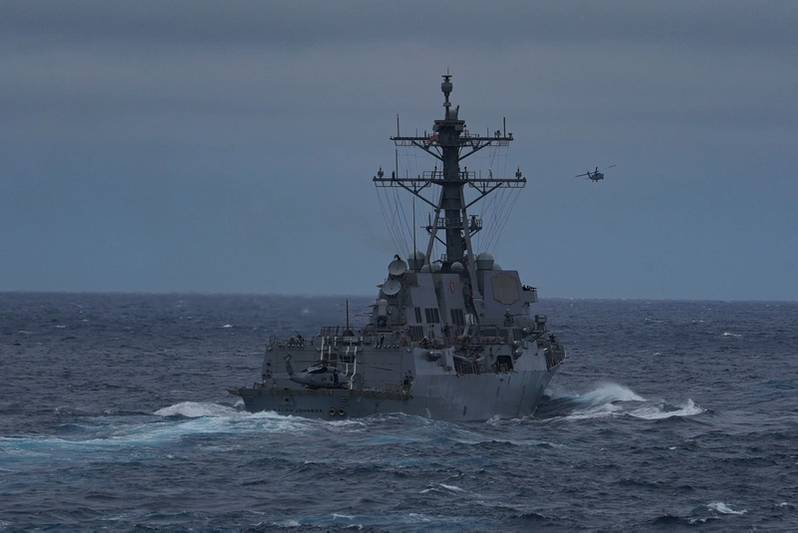 The Arleigh Burke-class guided-missile destroyer USS Ralph Johnson (DDG 114) transits the Pacific Ocean during a composite training unit exercise (COMPTUEX) as part of the Nimitz Carrier Strike Group (CSG). (U.S. Navy photo by Mass Communication Specialist 3rd Class Andrew Langholf/RELEASED)
The Arleigh Burke-class guided-missile destroyer USS Ralph Johnson (DDG 114) transits the Pacific Ocean during a composite training unit exercise (COMPTUEX) as part of the Nimitz Carrier Strike Group (CSG). (U.S. Navy photo by Mass Communication Specialist 3rd Class Andrew Langholf/RELEASED)
After OPC, the surface ship sector treads water
The surprise June 30 Coast Guard award of up to eleven Heritage-class Offshore Patrol Cutters (OPCs) to Austal USA will take time to play out. Bid protests may delay the award for months, and a sustained protest—one that requires significant intervention or curative measures—could still fundamentally transform the Coast Guard’s mid-endurance cutter recapitalization program.
With this award, the Coast Guard is committing to supervise the fabrication of two sub-classes of Mid-Endurance Cutter—Eastern’s first-generation Offshore Patrol Cutter, and Austal’s updated derivative. But it has also set up two Offshore Patrol Cutter production yards, introducing a basis for future competition and, if necessary, a rapid production increase, potentially occupying significant yard capability for years to come.
But industry reaction to Austal’s win has wider ramifications. The award to Austal will, in the near-term, likely lead Huntington Ingalls Industries to restart full-throated efforts at keeping the National Security Cutter production line alive, while Eastern Shipbuilding Group and Bollinger Shipyards seem set go head-to-head on several upcoming procurement efforts. Longer-term hopes to leverage Austal as a source of cheap submarine fabrication labor may need to be revised.
For the U.S. Navy, all eyes should be upon the Navy’s strangely attenuated USS Gerald R. Ford (CVN 78) deployment. The aircraft carrier’s first deployment will test out a shrunken air wing, more suited for a smaller aircraft carrier. In an ironic touch, the USS Ford may well end up proving out the utility of a smaller aircraft carrier before it demonstrates its own “as-advertised” surge and sustained “sortie generation” rates. But, to do any of this, the carrier must still power through technological kinks and potential disruptions. If the Ford fails while on deployment, suffering a power spike, a broken elevator, or some other unexpected blow to combat capability, it will be a tremendous problem for Huntington Ingalls and the rest of the U.S. aircraft carrier supplier base.
Likewise, the pressure is on for Huntington Ingalls Industry to perform. After receiving widespread kudos for halting deliveries of the Freedom-class Littoral Combat Ship, the Navy seems hungry for more industrial confrontations, confident enough to take on other poor performers in the shipbuilding industrial base. With CVN 79 about 85% complete and CVN 80 about 12% complete, every partner in the Ford program must make schedule, or risk putting the future of the supercarrier in doubt. But, if Huntington Ingalls Industries succeeds, and the USS Ford performs well, the Ford production line will likely get a few more ships.
The Navy’s demand signal for large combatants seems solid for now, bolstered by the Navy’s ongoing effort to procure Flight III Arleigh Burke-class destroyers and interest in some sort of “next-generation” large combatant.
But Navy backing for conventional surface combatants appears quite fragile. Industry is overlooking fact that, within two months, the Chief of Naval Operations’ stated requirement for 60 large combatants was overridden by the 30-year shipbuilding plan, targeting, instead, a range between 67 and 82 large surface combatants. That disparity should scare everybody in the large surface combatant industrial base.
If the Navy’s service chief wants only 60 large surface combatants, elevated shipbuilding targets for bigger ships in the 30-year shipbuilding plan is a very thin reed to support the industry’s longer-term hopes. Given both the low-end numbers and the disparity between the various plans, the shipbuilding industry’s struggle to increase the annual production rate to three Burkes a year seems somewhat aspirational without serious reductions in the size of the legacy large surface combatant fleet. Those cuts may be coming. As the Ticonderoga-class cruisers now seem set to depart the fleet in numbers, Flight I and Flight II Arleigh Burke-class destroyers will likely be next on the chopping block.
Things are a little bit better for small surface combatants. Despite a strong public relations push, the Constellation-class frigate program is showing signs of shrinkage and delay as well. And with Congress demanding a set of field tests before moving forward with additional Frigates, it will be tough for Constellation-class advocates to sustain momentum. The Navy’s fickle cadre of idealistic visionaries are never eager to do the tough work of transforming an unblemished vision into an imperfect reality. They are already dropping their Constellation-class advocacy to, instead, embrace the exciting potential of a future DDG(X) program.
To keep the program healthy, Fincantieri Marine Group had better make sure that their first ship stays on schedule and stays on budget—or hope that Mark Vandroff, the politically-connected CEO of Fincantieri Marinette Marine, is nominated for Navy Secretary in the next few years.
While the construction start date for the first Constellation-class frigate steadily slips to the right, the Navy will continue to move away from both classes of Littoral Combat Ship. Several Freedom-class Littoral Combat Ships are likely to leave service, and, as the cost of operating Freedom-class ships grows with the shrinking fleet, industry can expect more retirements relatively soon.
Things aren’t much better for amphibious ships. Old-school Marine obstinacy, coupled with well-funded outside efforts to styme Force Design 2030, have delayed—and will probably kill another small ship – the Light Amphibious Warship program. But the traditional amphibious ship building programs aren’t doing much better, parked in a fragile, ill-defined sustainment pattern, and getting gradually picked-off by the constant low-profile proliferation of low-cost Lewis B. Puller-class Expeditionary Mobile Base ships.
Other auxiliary ships won’t fill the peaks and valleys for America’s naval shipbuilders. The John Lewis (T-AO 205) class Fleet Replenishment Oiler program is underway, but, despite the demise of the Red Hill depot on Hawaii, the Navy does not seem to be in a rush to grow the oiler buy and expand it to support a second shipyard. Hospital ship recapitalization seems limited to ambulance vessels, while the Navy looks to buy old ships for the traditional military logistics fleet.
Small ships offer opportunities
Though the market for traditional surface ships seems limited, small ships outside the traditional combat fleet inventory offer real opportunities. Again, the Coast Guard seems to be leading the way with their planned recapitalization of 35 aged inland waterways support craft. The contract for these low-profile engineering-oriented vessels should be awarded sometime this year.
The only small ship program that seems to be proceeding for the Navy is the USNS Navajo-class towing, salvage, and rescue ships (T-ATS). Though the Navy appears eager to finish the program, the stage is set, with the new ships being built by both Austal USA and Bollinger, for design derivation and future competition. The parent “anchor handling tug supply” hullform has real potential to evolve into a future unmanned/minimally-manned platform. It may spiral off to serve as a base design for the Next Generation Logistics Ship or a light tender. And if the White House can force coordination with the Department of Energy’s Advanced Projects Research Agency program and MARAD, the Navajo class hull could even serve as a basis for energy efficiency experimentation in intermodal shipping, filling the gap between the Navy’s T-ATS and the Service’s future logistical support platform.
Other interesting small-craft building programs are underway as well. Barracks barges, otherwise known as Auxiliary Personnel Lighters-Small, are entering service. The VT Halter-built APL-67 and 68 entered service in mid-2021, and three more barracks barges are set to follow. In Morgan City, Louisiana, Conrad Shipyards, after winning a contract earlier this year, is set to build up to eight smaller Yard, Repair, Berthing and Messing (YRBM) barges. With the Navy facing serious challenges in managing housing costs, shipyard quality-of-life, and an emergent need to, in essence, deploy ad-hoc naval bases forward, it may be a good time for industry to propose building more of these useful yet oft-ignored platforms.
The Navy’s vision of small combatants is in flux. As crew become optional for many small craft, and they skate on the verge of becoming a type of munition or disposable platform, both the Navy and the small craft industrial base need to work together to better understand the ramifications. Outstanding requirements may change; while the Navy needs unmanned vessel systems to operate for long periods of time, they may only need to work once or twice before the vessel is lost. As a munition, resupply and restocking become big concerns.
In industry, Louisiana-based Metal Shark Boats probably offers one of the better examples of how shipbuilders might shift to meet this new marketplace. By committing back in 2017 to maintain an inventory of stock boats—a supply of vessels that now range from 23-foot RIBs to 45-foot Defiant-class patrol craft, Metal Shark positioned itself to meet emergent demand for smaller craft. By being ready, Metal Shark, as of June 2022, is set to provide Ukraine with some 23-combat craft and well-positioned to supply even more boats if any are lost in combat or if Ukraine’s demand for smaller patrol craft increases.
As vessels become optionally-crewed, semi-expendable assets, serving effectively as basic munitions or semi-attritable sensors, industry priorities and the dynamics of vessel production and sales may need to change significantly to address refits, higher levels of operational loss, and rapid changes in demand. If the Navy wants industry to build, in essence, modern-day fireships, then both the Navy’s procurement models as many long-standing naval requirements may need to change as well.
In conclusion: The Columbia class drives the next 12 months
Unless something unexpected happens in the maritime, the next 12 months will focus on the distribution of work for the Columbia class ballistic missile submarine. This is the big prize—an underestimated opportunity for a second-tier yard to get real experience in undersea shipbuilding. And as the Australia-UK-U.S. (AUKUS) submarine-building alliance plays out, America’s expansion of their undersea industrial base may pay real dividends to the right yard.
Aside from ancillary undersea support platforms, other opportunities exist on the margins, in smaller craft and yard infrastructure, well outside of the Navy’s traditional shipbuilding plans. For better or worse, America’s governmental maritime procurement strategy is, essentially, locked in until after the next presidential election.
Source: https://www.marinelink.com/news/surface-subsea-space-us-navy-shipbuilding-498316




